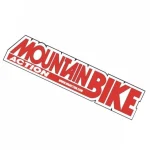HOW TO REFRESH YOUR TUBELESS TIRE SEALANT IN FIVE EASY STEPS
Tubeless tires paired with sealant are the best setup to prevent flat tires from both punctures and pinch flats. That setup loses its magic when the sealant dries up, though. The number one mechanical that happens on our rides is a flat tubless tire as a result of dried up sealant – and it’s easily preventable. Although it varies greatly depending on sealant type and riding climate, average tire sealants have a lifespan of about 60–90 days. After that they dry up and lose all their sealing properties.
STEP ONE
Remove your wheel from the bike and unseat ONE bead of the tire. We have done this without removing the wheel but it’s typically cleaner and easer with it off of the bike. We have also used sealant injectors to refresh sealant through the valve stem. Depending on the sealant used injectors can work well but many sealant types have suspended crystal or fiber-like substances that like to clog the hose. For this technique we will focus on the partial tire removal method.
STEP TWO
Many riders insist that you can simply add more sealant, and you can, but we prefer to remove the old stuff first. Adding sealant to what’s remaining can water down the mix since much of the sealing latex has dried to the tire. We pour out any remainging liquid and remove any “tire boogers”. We also pull any large dried sealant chunks off the inside of the tire since they can add weight. You can also wipe down the inside of the tire but we often skip this step.
STEP THREE
There are many good sealants to choose from. We have had great luck with WTB, Orange Seal, Stan’s, and Maxima’s sealants. This time we’re going to use some Monkey Goo from RedMonkey. It comes in a handy bottle that measures the sealant for you. Most MTB tires should use between 60–100 milliliters (2–3 ounces) of sealant but this varries slightly between brands. Always check your particular sealant’s manufacturer reccondations and follow that. Bigger tires like 29ers will require more, and lightweight XC tires will require less. Unless we are setting up lightweight cross country race tires, we often add a splash extra because when it comes to sealant, a little more is always better than a little less.
STEP FOUR
Since one of the tire beads is still seated and not removed, seating this tire with a floor pump should be no problem at all. If both beads are removed, or if the tire is particularly loose, a compressor may be necessary to give it a blast of air to seat the beads.
STEP FIVE
Subscribe & Renew Here
Mountain Bike Action is a monthly magazine devoted to all things mountain biking (yes, that’s 12 times a year because we never take a month off of mountain biking). It has been around since 1986 and we’re still having fun.








